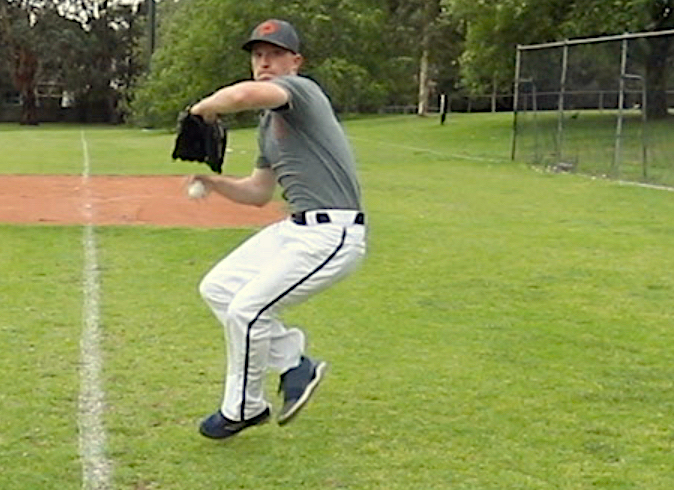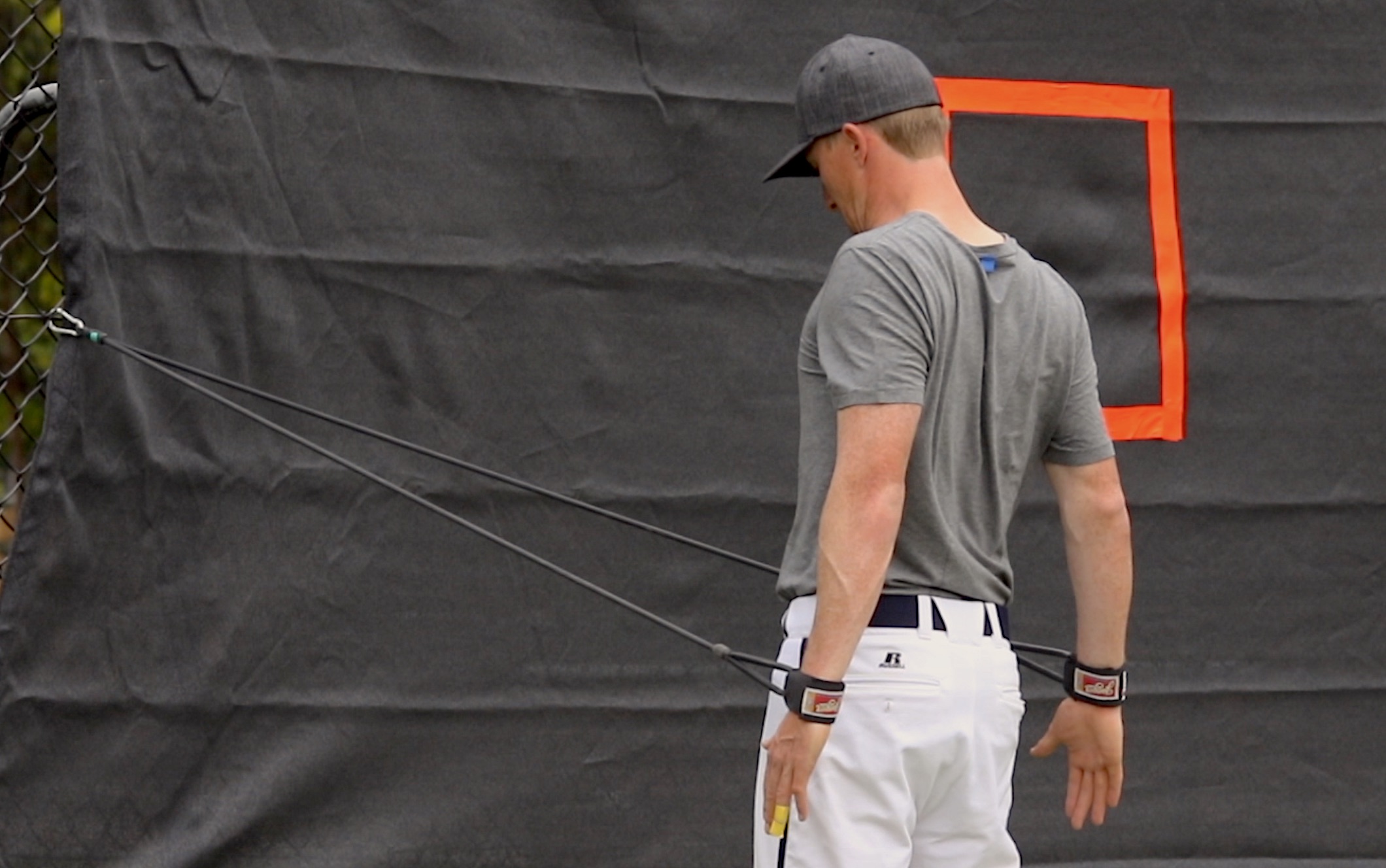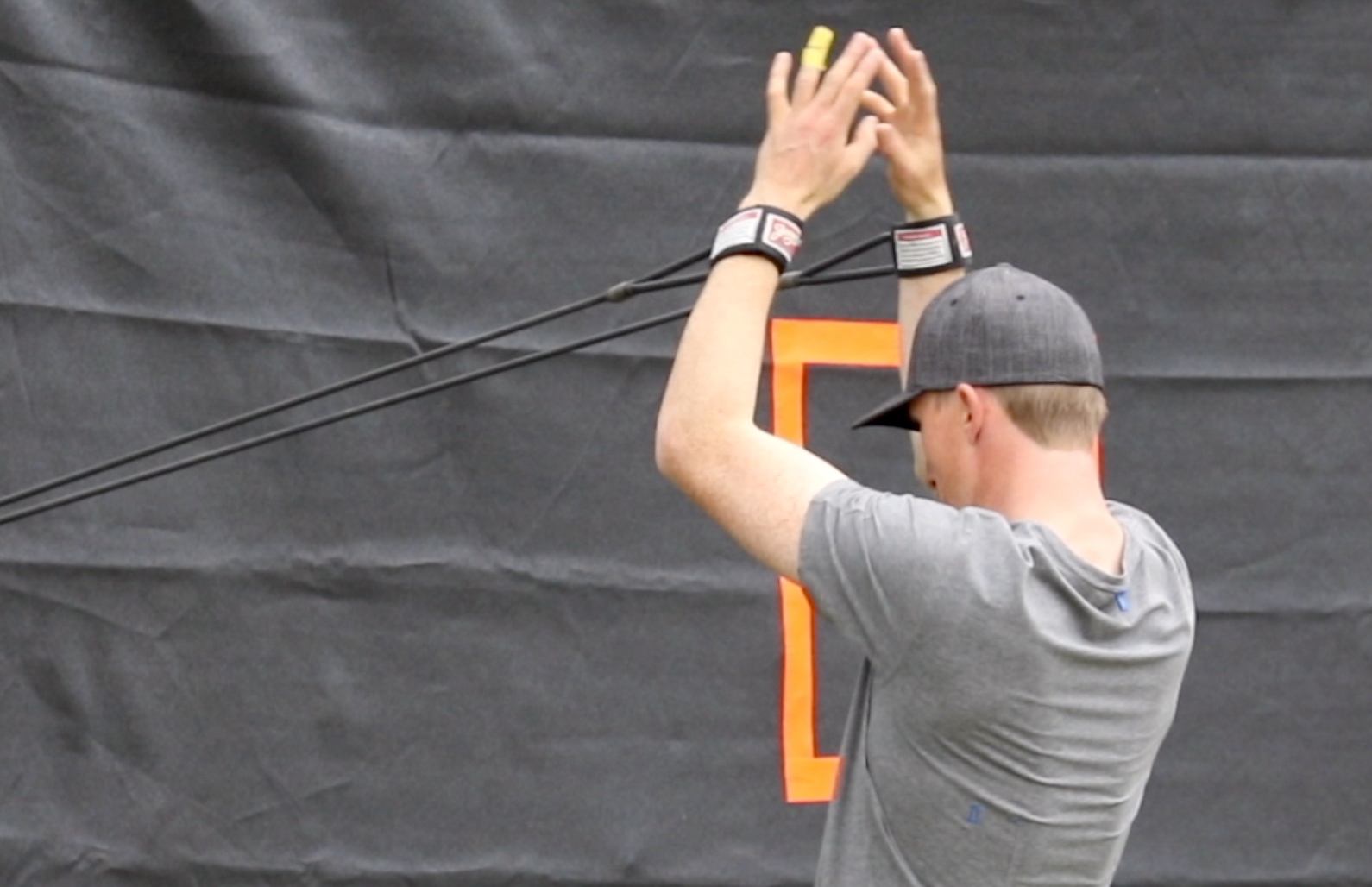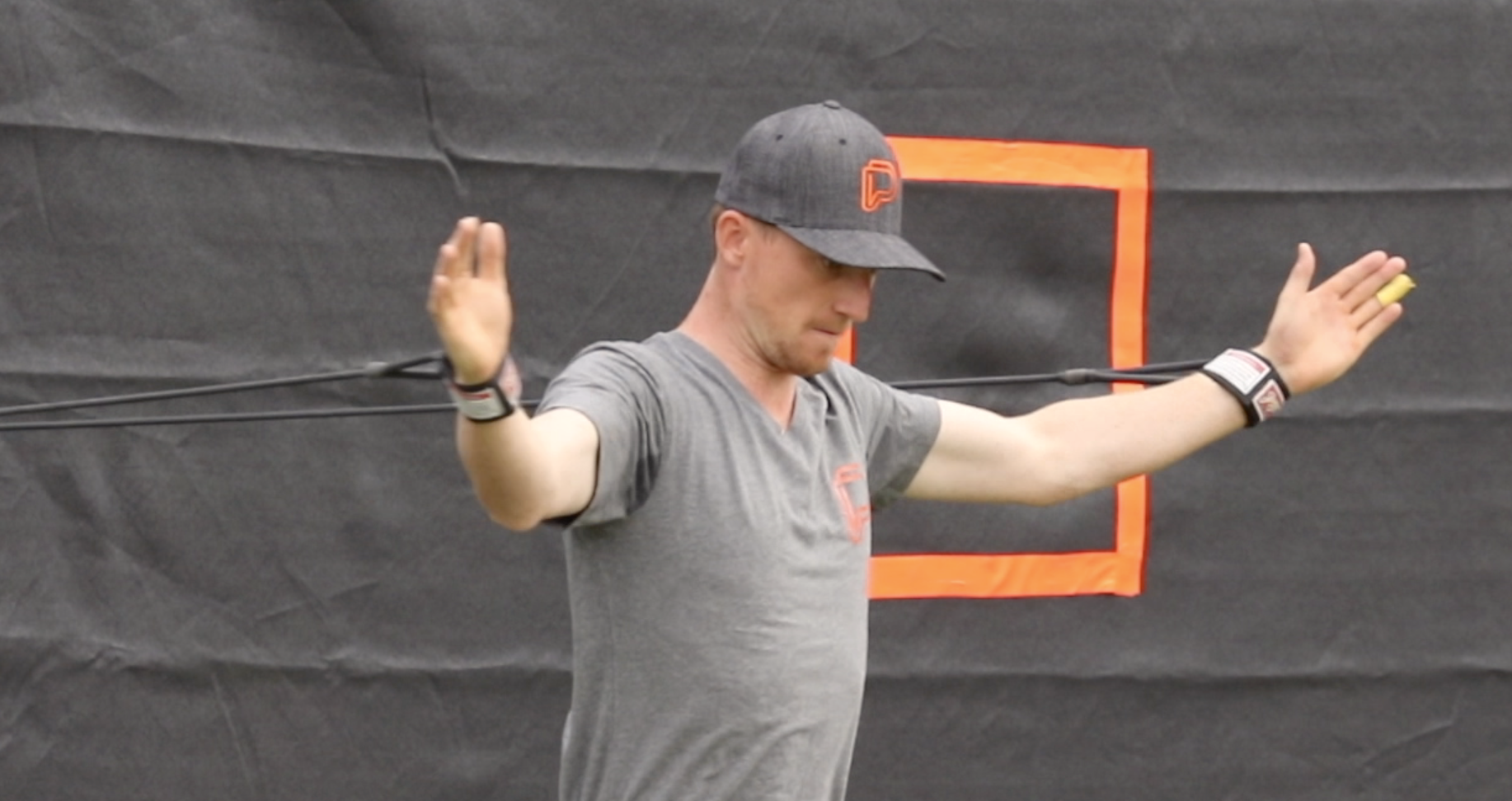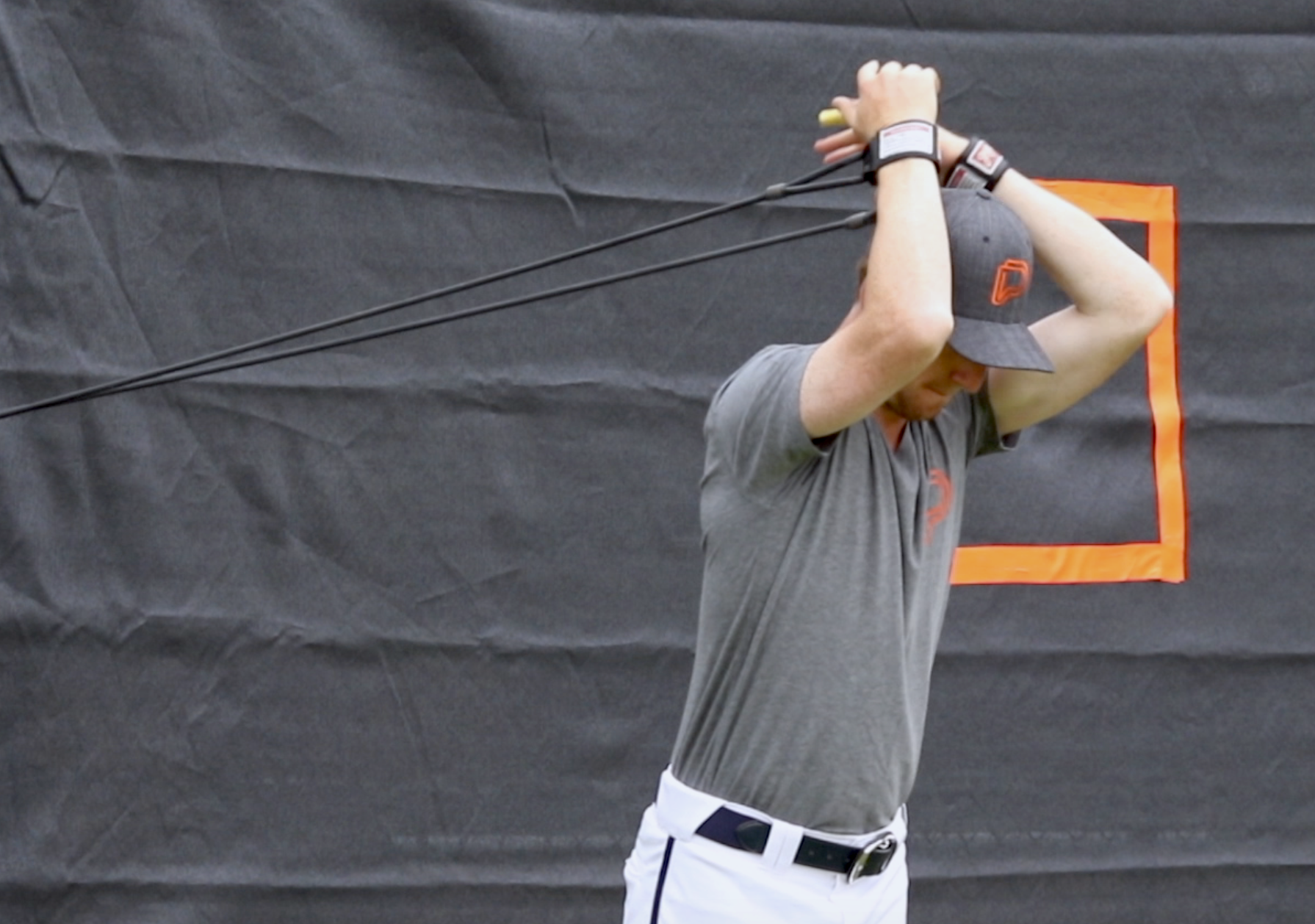The Pivot Pick video is part of the Performance Plus Strength and Conditioning Series. They are really useful in teaching the arm to create an effective throwing motion. While standing perpendicular to a solid surface with your throwing arm side facing the target, grip a PlyoCare ball in the throwing hand. Start in the high-cocked position with the forearm slightly supinated. Initiate the throw by pulling the glove-side shoulder around the spine, folding the glove arm downwards and close to the side of the ribcage. Roll the throwing elbow into the driveline by raising the elbow upwards as the mass of the PlyoCare ball pushes the forearm back into layback. Drive the chest forward and unwind the throwing arm by pronating the forearm during internal rotation. Finish with the throwing shoulder forwardly rotated to the target; the ideal throwing arm path will have the throwing hand hit the throwing arm side pants pocket. Do your best to not finish across the body. This drill trains internal rotator and elbow extensor strength, shoulder mobility, and forearm pronator-flexor dynamic strength. Video of this drill must be reviewed on a regular basis to make sure the athlete is forwardly rotating the torso, pronating the forearm correctly (throwing curveballs and sliders with 1kg PlyoCare balls is not uncommon when first starting this due to poor awareness of forearm positioning), and driving the chest forward to maximize linear and rotational velocities.



